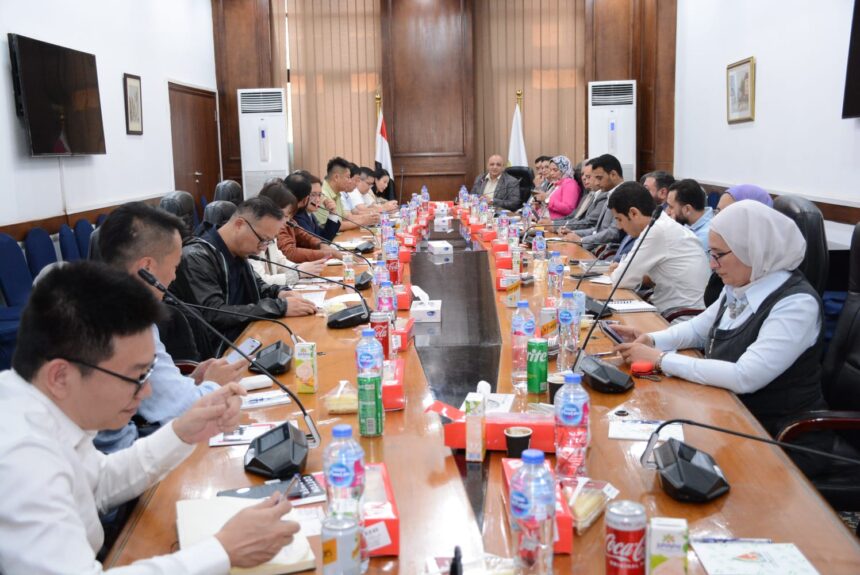The Egyptian Chamber of Apparel and Home Textile Industries (ECAHT) and the Textile Industries Chamber at the Federation of Egyptian Industries (FEI) recently hosted a high-level Chinese delegation comprising 15 representatives from both public and private sectors. The meeting aimed to explore avenues for boosting investment in Egypt’s burgeoning garments and textile sectors.
During the discussions, the Chinese delegation underscored the significant potential within the Egyptian market, emphasizing the availability of a young and skilled labor force alongside Egypt’s extensive network of trade agreements with major global economic blocs. These advantages, they noted, provide strong incentives for Chinese investors to swiftly establish a presence in the country.
Shaimaa Bahaa El Din, Director of International Affairs & Development Partners’ Relations at the FEI, welcomed all forms of collaboration and affirmed the readiness of Egyptian business leaders to promptly engage in new economic partnerships in accordance with Egyptian laws. She highlighted the flexibility of investment models available, including partnerships, acquisitions, or the establishment of new manufacturing facilities.
Hany Kadah, Executive Director of the ECAHT, emphasized Egypt’s keen interest in sourcing production inputs and fabrics from China. He noted that the Chamber represents over 10,000 registered ready-made garment factories in Egypt. Kadah further pointed out Egypt’s strategic advantage stemming from trade agreements with key blocs across Asia, the Americas, and Africa, making the country an attractive destination for Chinese investment. He also highlighted the success of the Chinese industrial zone TEDA in Egypt, which currently hosts major Chinese investments, and stressed the importance of maintaining effective and continuous communication channels to address any challenges.
Kadah added that Egypt’s labor force is readily available but requires additional training, referencing the presence of many Turkish garment factories that operate in Egypt and export products made by Egyptian workers.
Khaled El-Behairy, Executive Director of the Textile Industries Chamber, noted that the dyeing, finishing, spinning, and weaving sectors encompass 14,000 members within the chamber. He emphasized the mutual benefits of Chinese investments, where China gains from Egypt’s labor force, abundant energy resources, and trade agreements, while Egypt benefits through job creation, increased Chinese investment, and higher export volumes.
Li Xin, Vice President of the China National Garment Association (CNGA), expressed that Chinese investors are actively expanding their overseas investments, with a strong focus on increasing their footprint in Africa—particularly in Egypt. He highlighted Egypt as a key investment destination amid global shifts in trade policies and customs tariffs, supported by the availability of competitive labor costs that position Egypt for significant Chinese investment growth in the near future.
Xin also provided an overview of China’s garment industry, which consists of 195,000 companies employing 20 million workers and generating total sales of CNY 4.5 trillion. He explained that many Chinese companies have recently relocated portions of their operations abroad, particularly to East Asia, in response to evolving global economic dynamics.




